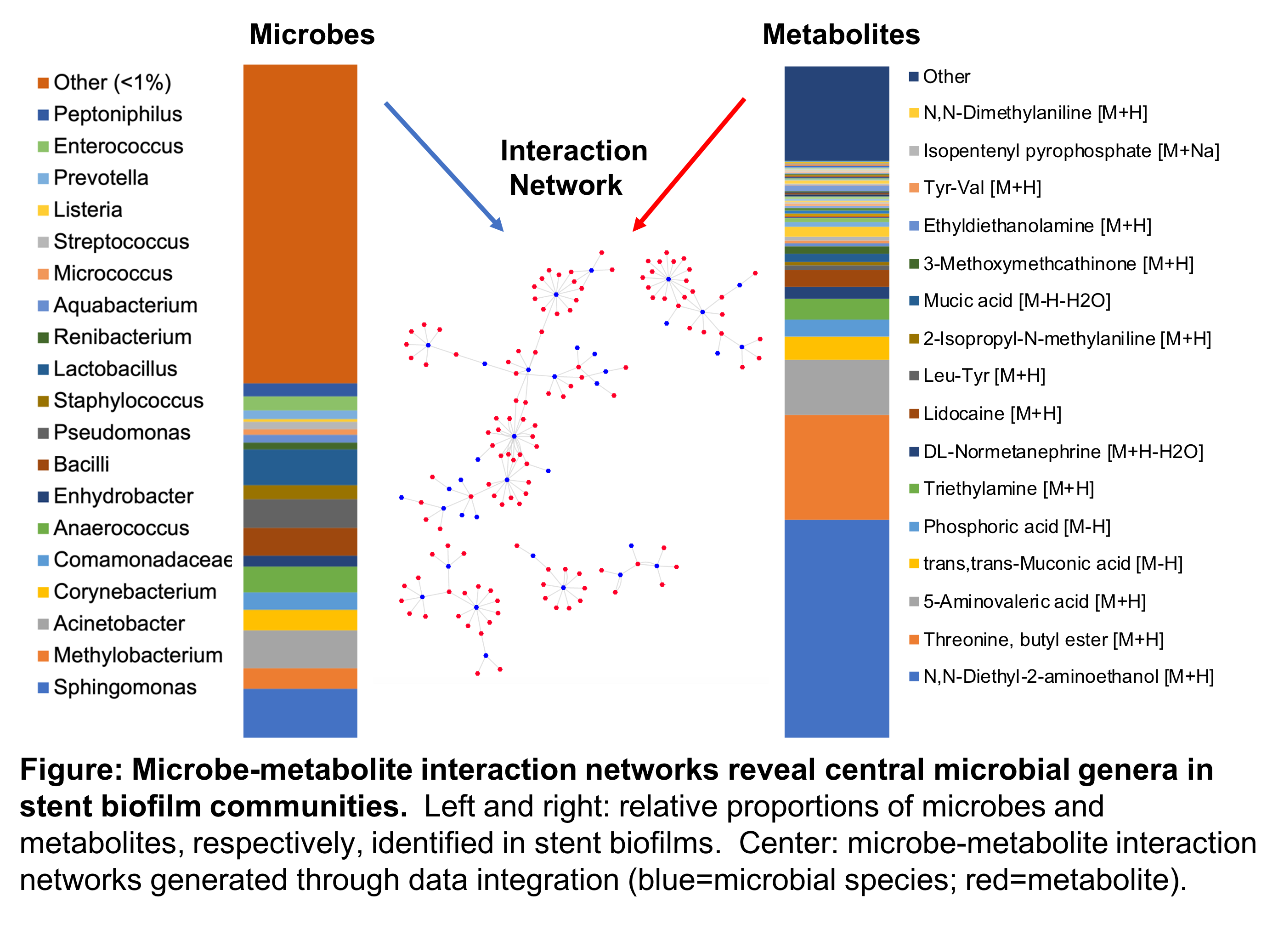Back
Poster, Podium & Video Sessions
Moderated Poster
MP05: Stone Disease: Basic Research & Pathophysiology
MP05-09: Ureteral stent biofilms exhibit complex interaction networks and variable formation by surface material and microbial strain
Friday, May 13, 2022
8:45 AM – 10:00 AM
Location: Room 225
Glenn T. Werneburg, Daniel Hettel*, Ava Adler, Smita De, Raymond Rackley, Daniel Shoskes, Aaron Miller, Cleveland, OH
- DH
Daniel Hettel, MD
Cleveland Clinic
Poster Presenter(s)
Introduction: Double-J ureteral stents are effective for urinary tract drainage including before and after stone management, but may serve as a nidus for infection through biofilm formation. Because antibiotics do not reduce stent-associated biofilms or infections, microbial-resistant materials and coatings are needed. We sought to determine the microbial and metabolite composition and interaction networks in stent biofilms and compare biofilm formation of isolated microbial strains from stents on different surface materials in vitro. We hypothesized that interaction networks would identify important species in biofilm communities, and that specific species and materials would exhibit variable biofilm formation.
Methods: Patients scheduled for ureteral stent removal were consented per IRB-approved protocol. Upon removal, the proximal and distal ends were swabbed. Swabs, alongside controls, were subjected to 16S next-generation sequencing and metabolomics to determine composition and diversity. Data integration generated interaction networks. A continuous stir-tank CDC bioreactor was used to reconstitute and quantify in vitro biofilm formation from stent-isolated bacteria on materials including silicone, PTFE, polyurethane, polycarbonate, and titanium. Differences were analyzed with ANOVA and Bonferroni t-tests.
Results: 38 regions from 19 stents were analyzed. The most common microbial genera and metabolites included Sphingomonas, Lactobacillus, and diethanolamine (Fig. left and right, respectively). Interaction networks (Fig. center) demonstrated importance of Sphingomonas, Lactococcus, Peptoniphilus, and Enterococcus in biofilm communities. 5 of 5 tested microbial strains produced biofilms in the bioreactor and had significant differences among materials and strains, with Enterococcus faecalis the most prolific. Titanium consistently harbored the least biofilm formation.
Conclusions: All stents harbored bacteria, and microbe-metabolite interaction networks identified important genera within the biofilm community. Biofilm formation reconstituted in vitro demonstrated variation amongst metabolically important strains and materials. Our results inform efforts to design novel ureteral stent coatings and materials to prevent biofilm formation.
Source of Funding: N/A

Methods: Patients scheduled for ureteral stent removal were consented per IRB-approved protocol. Upon removal, the proximal and distal ends were swabbed. Swabs, alongside controls, were subjected to 16S next-generation sequencing and metabolomics to determine composition and diversity. Data integration generated interaction networks. A continuous stir-tank CDC bioreactor was used to reconstitute and quantify in vitro biofilm formation from stent-isolated bacteria on materials including silicone, PTFE, polyurethane, polycarbonate, and titanium. Differences were analyzed with ANOVA and Bonferroni t-tests.
Results: 38 regions from 19 stents were analyzed. The most common microbial genera and metabolites included Sphingomonas, Lactobacillus, and diethanolamine (Fig. left and right, respectively). Interaction networks (Fig. center) demonstrated importance of Sphingomonas, Lactococcus, Peptoniphilus, and Enterococcus in biofilm communities. 5 of 5 tested microbial strains produced biofilms in the bioreactor and had significant differences among materials and strains, with Enterococcus faecalis the most prolific. Titanium consistently harbored the least biofilm formation.
Conclusions: All stents harbored bacteria, and microbe-metabolite interaction networks identified important genera within the biofilm community. Biofilm formation reconstituted in vitro demonstrated variation amongst metabolically important strains and materials. Our results inform efforts to design novel ureteral stent coatings and materials to prevent biofilm formation.
Source of Funding: N/A


.jpg)
.jpg)